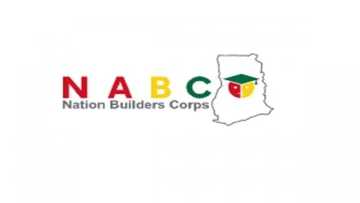Theories of motivation in management
Motivation in management describes ways in which managers promote productivity in their employees. Theories of motivation explain how workers are motivated and provide suggestions for how to increase motivation in the workplace. What are some of these theories as defined by experts?

Source: Facebook
READ ALSO: Uber Ghana contact number and offices
Motivation models
Motivation can be defined as the forces acting on or within a person that cause the arousal, direction, and persistence to achieve a goal. Motivation theory is therefore concerned with the processes that explain why and how human behaviour is activated.
Content theories of motivation definition
Content theories are also called needs theories because they are generally associated with a view that concentrates on the importance of determining 'what' motivates us. In other words, they try to identify what our 'needs' are and relate motivation to the fulfilling of those needs.
The Content theory explains why human needs change with time.
Process theory of motivation
The process theory addresses more, the issues relating to how the process works and sustains itself over time. For instance, looking at factors that determine the degree of effort, the continuation of effort and the modification of effort.
Equity theory
In this theory, the employee constantly assesses their level of effort against fellow workers' and the reward they receive for their effort. If they perceive a significant difference between their level of effort and their fellow workers, they endeavour to bring about equality of effort for everyone by adjusting up or down, their own performance to the level of their fellow workers. Likewise, the relative reward for effort is also monitored. The message for managers is that employees need to be seen to be rewarded on a fair and equitable basis and inequities quickly adjusted.

Source: Facebook
Expectancy theory
This theory highlights that motivation is partly a decision-making process that evaluates effort for outcomes. It looks at the involvement of the active cognitive processes and user choice in the process and also highlights the importance of the outcome representing a valued reward for the individual involved.
The actual evaluation process is broken down into a number of parts:
- If I put in effort, can I expect to perform at the required task?
- Will performing this act or task achieve the desired outcome?
- Can I expect that the outcome will be available and forthcoming?

Source: Facebook
The Porter-Lawler model
This model of motivation, although based on the expectancy theory, is probably the most complete theory of workplace motivation. It is an integrated approach that includes elements of almost all the other motivation theories.
The Traditional theory of motivation
Employee motivation
Employee motivation is a critical aspect in the workplace which leads to the performance of the department and the company as a whole. Employee motivation is the level of energy, commitment, and creativity that a company's workers bring to their jobs.
Theories of motivation in Education
Motivation is also used within the educational system as a force to encourage student learning and understanding. In the educational setting, motivation is either an internal force or an external force. There are two schools of thought on motivation in education.
Intrinsic motivation
According to humanistic theories set forth by Carl Rogers, motivation might come from within an individual without any thought to the external reward. Students receive their own internal reward through an increase in self-esteem and a sense of achievement when they reach their desired objectives. They may just feel the desire to succeed based on factors such as their own interest in an activity or the feeling of satisfaction that is achieved when they complete the necessary steps to achieving the desired accomplishment.
Extrinsic motivation
According to B.F. Skinner, students who need reinforcement to succeed are operating under extrinsic motivation. Punishment and reward are used as motivational tools. The external motivation that is required to drive the individual's positive behaviour is offered in the form of a system that reinforces the desired behaviour or negates undesirable actions.
Theories of motivation in Psychology
These are the motivation theories in psychology.
1. Incentive theory (pull theory).
This is when something that we want and/or need pulls & compels us to do a certain task. For instance, If I work for more hours at my office, I'll get paid more.
2. Drive theory (push theory)
The bad situations we want to avoid push us to perform in the opposite direction. So, If I don't perform well in the next match, I'll be kicked off the team and I don't want that.
3. Optimal level theory
Doing a task merely for the sake of doing.
Let's compare and contrast Maslow and Herzberg theories of motivation.
Maslow's theory
1. Physiological needs:
These needs are basic to human life. They include food, clothing, shelter, air, and water which are necessities of life. These needs relate to the survival and maintenance of human life. They exert tremendous influence on human behaviour. These needs are to be met first, at least partly, before higher level needs can emerge. Once physiological needs are satisfied, they no longer motivate the man.
2. Safety needs:
The next set of needs are called safety and security needs. These needs find expression in such desires as economic security and protection from physical dangers. Meeting these needs requires more money, hence, the individual works more.
3. Social needs:
Man is a social being and is interested in social interaction, companionship, and belonging. It is this need for socialising and belonging that makes people want to work in groups.
4. Esteem needs:
These needs refer to the need for self-esteem and self-respect. They include needs which indicate self-confidence, achievement, competence, knowledge and independence. The fulfilment of self-esteem needs leads to self-confidence, strength and the sense of being useful in the organisation.
5. Self-Actualisation needs:
This level represents the culmination of all the lower, intermediate, and higher needs of human beings. In other words, the final step under the need hierarchy model is the need for self-actualization. This refers to the need for fulfilment.

Source: Facebook
Herzberg's theory
The psychologist Frederick Herzberg extended the work of Maslow and proposed a new motivation theory popularly known as Herzberg’s Motivation Hygiene (Two-Factor) Theory.
He asked people to describe two important incidents at their jobs:
(1) When did you feel particularly good about your job?
(2) When did you feel exceptionally bad about your job? He used the critical incident method of obtaining data.
The responses when analysed were found to be fairly consistent. The replies respondents gave when they felt good about their jobs were significantly different from the replies given when they felt bad. Reported good feelings were generally associated with job satisfaction, whereas bad feeling with job dissatisfaction.
Herzberg labelled the job satisfiers 'motivators' and the job dissatisfiers 'hygiene or maintenance' factors. Taken together, the motivators and hygiene factors have become known as Herzberg’s two-factor theory of motivation.

Source: Facebook
Are you intrinsically or extrinsically motivated? As an employee or a manager, you must know what motivates your and others to achieve more. If by chance, you are not quite sure, this article gives you a better understanding into the various theories of motivation.
READ ALSO: Multichoice DSTV Ghana contact number, offices, payment details
Source: YEN.com.gh








